



For optimal results, I recommend starting your outdoor cleaning project by selecting the right nozzle for your high-pressure machine. A 25-degree nozzle is ideal for most hard surfaces, striking a balance between power and control.
Preparation is key. Clear the area of furniture and any debris, ensuring a clean slate for the task ahead. This step not only enhances efficiency but also avoids potential damage to items left in place.
Next, ensure that you have a suitable cleaning solution, especially if the surface shows signs of mildew or stubborn stains. Mixing the solution according to the manufacturer’s guidelines and applying it before the main wash will yield far better results.
Once everything is in order, hold the spray lance at a consistent distance of around 30 cm from the surface while keeping the nozzle angled to avoid dislodging loose stones or tiles. A sweeping motion will guarantee thorough coverage without over-saturating any one area.
After rinsing, remember to let the surface dry completely before placing any furniture back. This helps avoid slips and keeps the area looking its best for longer. With these techniques, your outdoor space will be revitalised effortlessly.
Selecting the Right Equipment for Patio Maintenance
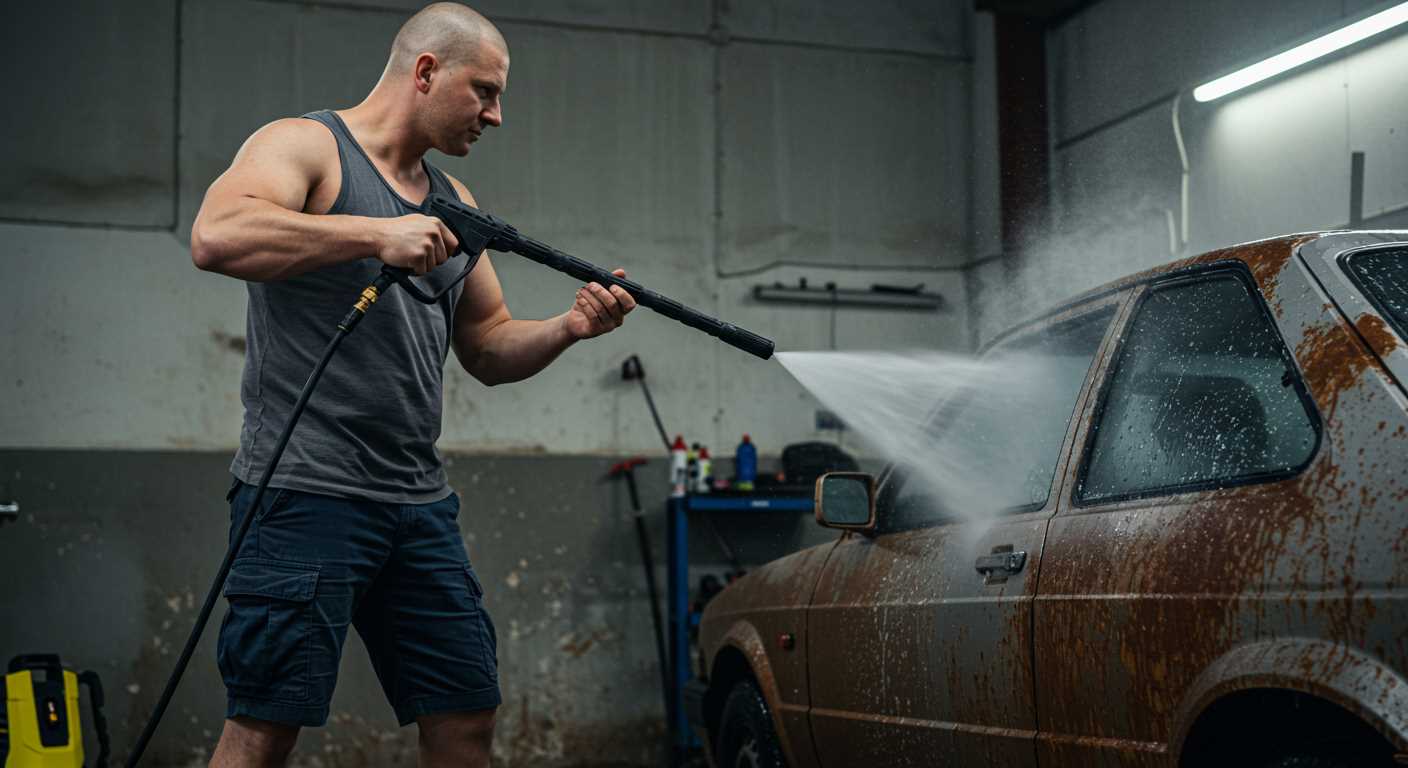
Choosing the appropriate machine involves understanding the specific needs of your outdoor surface. I always recommend a unit with a minimum pressure of 120 bar for effective grime removal from slabs or stones. For tougher stains, consider options that reach 150 bar or higher.
Key Specifications to Look For
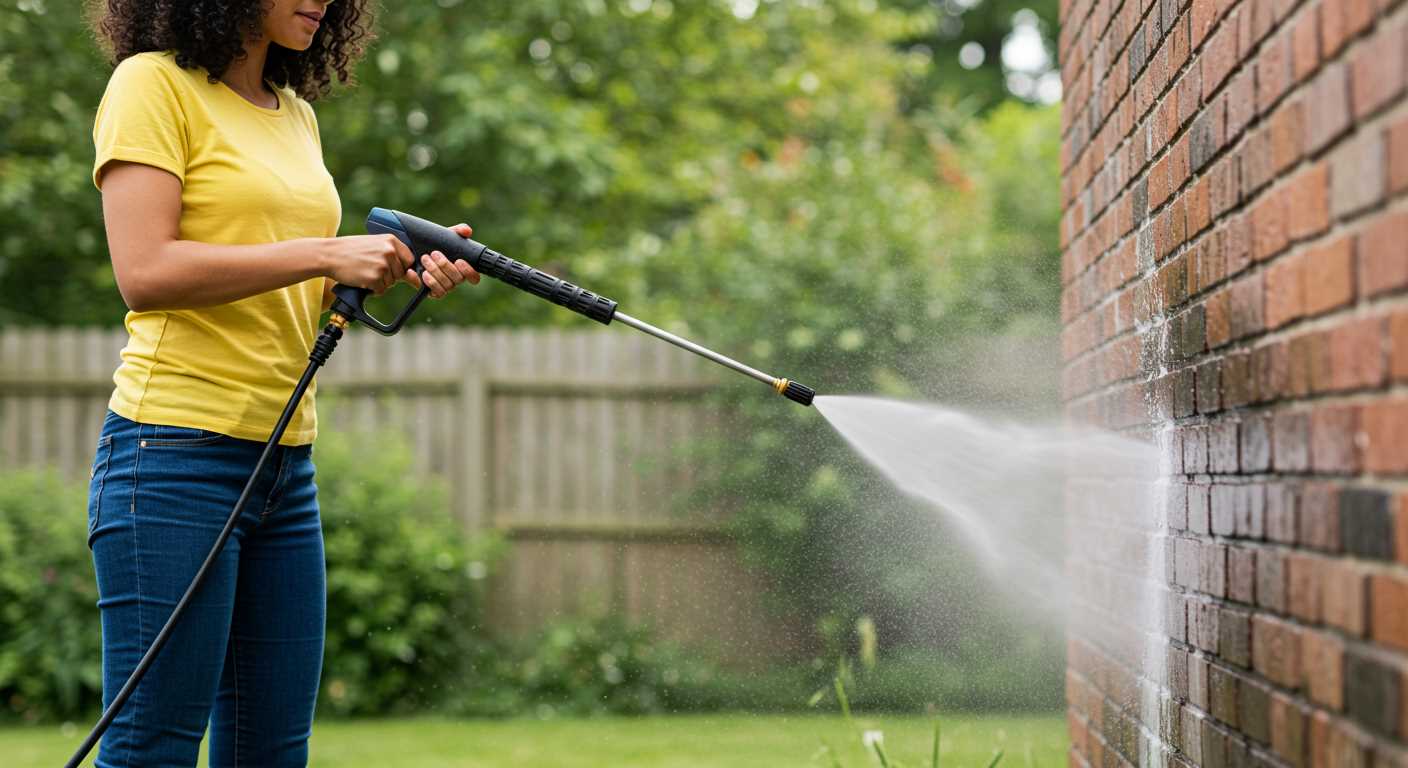
| Specification | Recommended Range |
|---|---|
| Pressure | 120-150 bar |
| Flow Rate | 500-600 litres/hour |
| Type of Nozzles | Adjustable and rotating |
| Weight | Portable for easy handling |
For varying levels of dirt, adjustable nozzles are crucial. They allow you to customise the intensity of the jet according to the surface type. A rotating nozzle can offer a broader cleaning area for large spaces, which is a time-saver.
Additional Features to Consider
Invest in models that include a detergent tank. This feature facilitates the application of cleaning agents, enhancing the effectiveness of the process. Furthermore, look for machines with a robust build and durable materials to withstand frequent usage.
Always keep in mind the necessary accessories, such as extension wands or surface cleaners, which can significantly improve your cleaning experience. Having the right equipment makes a noticeable difference in outcomes and satisfaction.
Preparing the Area for Effective Washing
Begin by clearing the surface of any furniture, potted plants, or decorative items. Ensure the entire zone is unobstructed to facilitate thorough cleaning.
Next, address debris accumulation, including leaves, soil, or stones. Use a broom or a leaf blower to remove large particles that may interfere with the washing process.
Inspect for any loose stones or tiles. Secure or replace them to prevent damage during the cleaning session.
Check the surrounding areas for delicate items. Protect nearby vegetation by covering them with tarpaulin. This safeguards plants from water spray and potential cleaning solutions.
Before starting equipment, ensure that all connections are secure. Verify that hoses and fittings are free from leaks to avoid interruptions during the task.
Finally, set up a drainage plan. Consider how water will flow away from the space to prevent pooling or flooding in other areas.
Choosing the Appropriate Cleaning Detergent for Patio Surfaces

Opt for a detergent specifically formulated for your surface type. For natural stone, look for pH-neutral products to prevent erosion. Concrete requires strong cleaners to tackle stubborn stains, while wooden decking benefits from biodegradable solutions that preserve its integrity.
Key Considerations
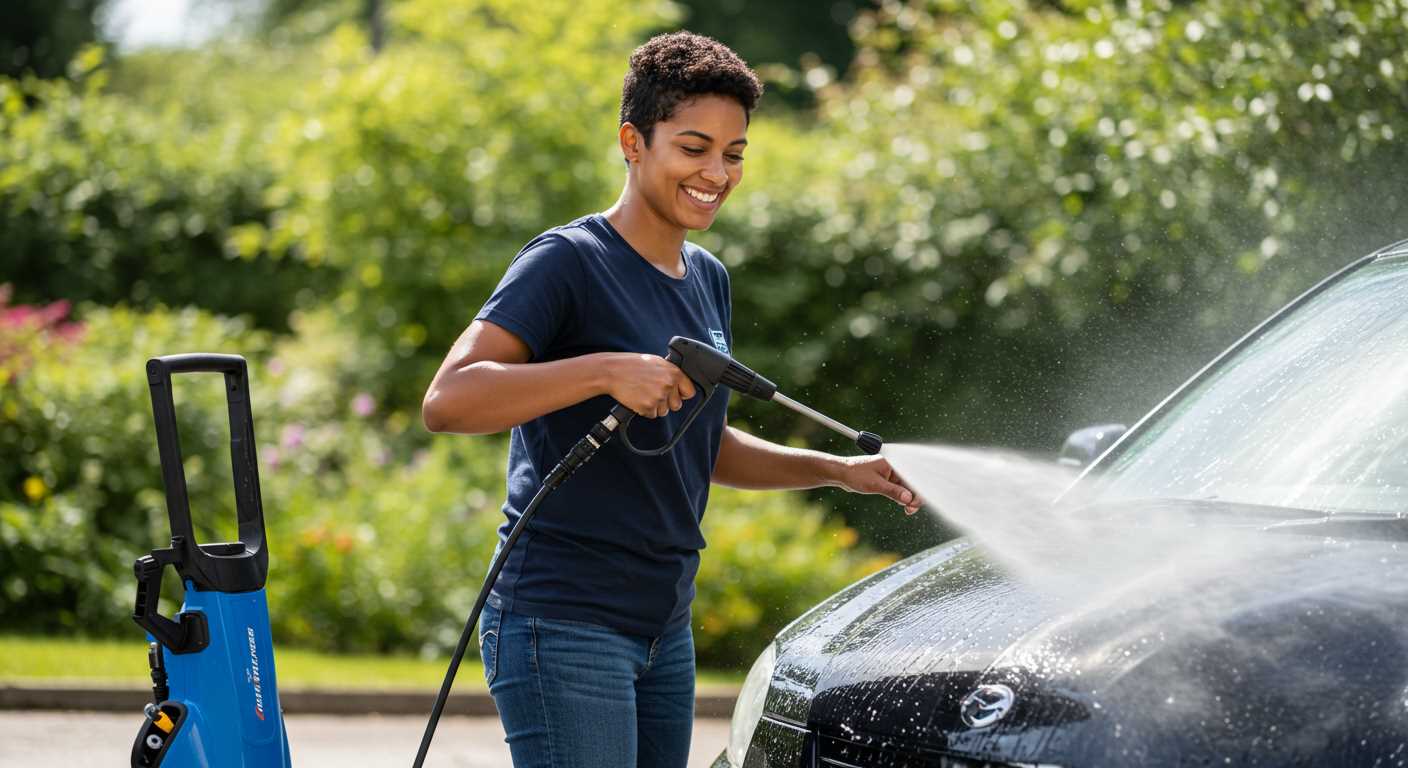
- Compatibility: Ensure the detergent matches the material of your outdoor area.
- Stain Type: Identify the nature of stains–oil, algae or general dirt–and select a suitable cleaner.
- Concentration: Choose between concentrated formulas or ready-to-use options based on the extent of dirt.
- Environmental Impact: Select eco-friendly options that won’t harm surrounding flora or fauna.
Recommended Detergents
- Algae and Moss Remover: Ideal for stone and concrete surfaces.
- Degreasers: Effective against oil and grease stains on concrete and tiles.
- Wood Deck Cleaner: Gentle on timber while removing dirt and mildew.
Perform a patch test with any new cleaner in a discreet area to ensure no adverse reactions occur. Mixing products can yield unpredictable results; stick to one formula at a time.
Setting the Correct Pressure and Nozzle for Patio Cleaning
For optimal results, adjust the force to around 1500-2000 PSI if the surface is made of concrete or stone. This level effectively lifts grime without damaging the material. For delicate surfaces like brick or tile, reduce the pressure to 1300-1500 PSI to prevent chipping or cracking.
Selecting the appropriate nozzle is equally important. A 25-degree or 30-degree fan nozzle works well for most surfaces, providing a wide spray to cover more area while still delivering adequate power. For stubborn stains, switch to a 15-degree nozzle to concentrate the force on specific spots.
A rotating turbo nozzle is also a valuable tool; it combines the benefits of narrow and wide sprays, effectively tackling tough dirt while minimizing the risk of damage. Remember to maintain a distance of about 12-18 inches between the nozzle and the surface for safe and efficient cleaning.
Techniques for Optimal Cleaning of Different Patio Materials
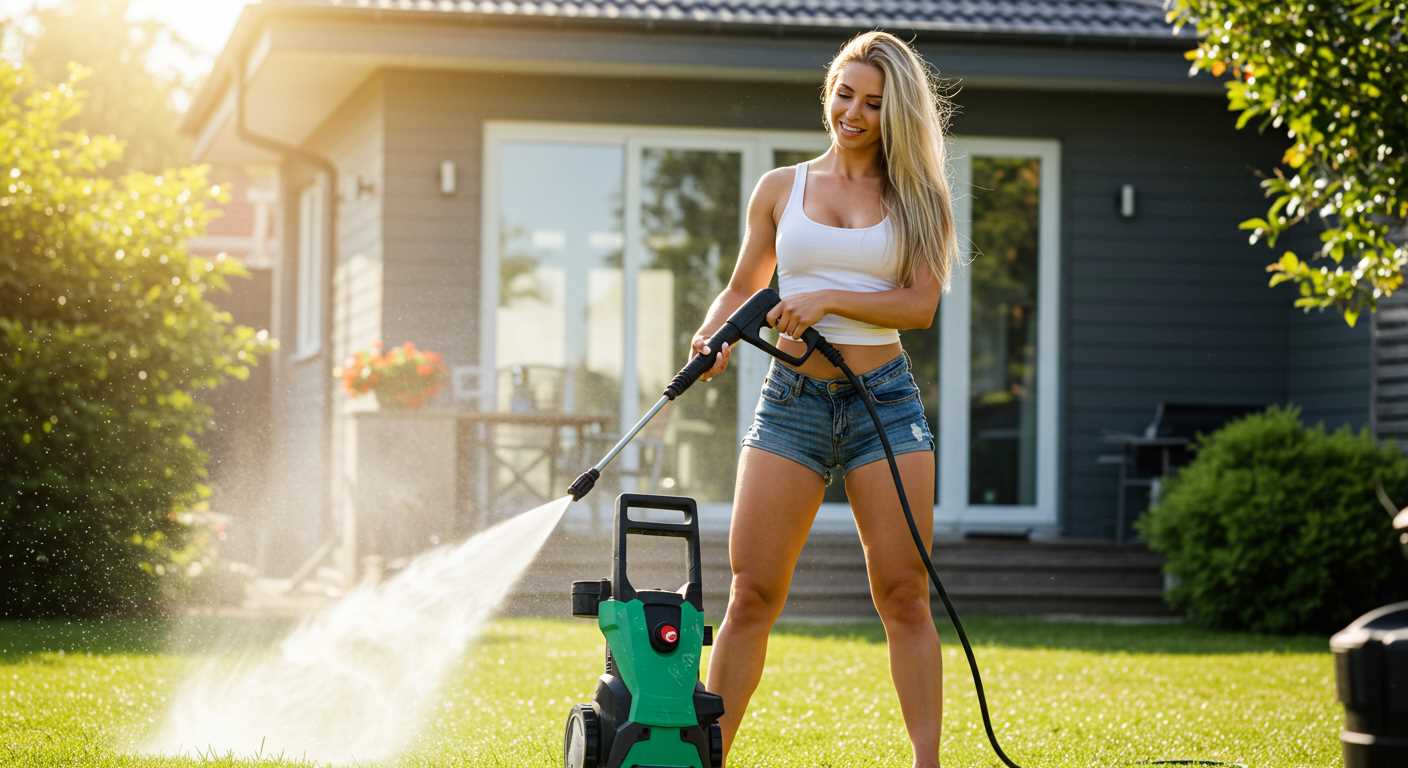
Concrete: For concrete surfaces, a fan nozzle at around 2500 PSI is ideal. Keep the spray at a 45-degree angle to prevent gouging the surface. Start from one end and work systematically to the other, moving slowly to allow the water to penetrate dirt and grime. For tough stains, consider a dedicated concrete cleaner mixed into the water stream.
Stone: Natural stone requires a delicate approach. Use a low-pressure setting, typically below 1500 PSI, with a wider nozzle to avoid etching. Maintain a consistent distance of about 12 to 18 inches from the surface. If algae or moss is present, pre-treat with a suitable biocide before rinsing it off.
Brick: Opt for a medium pressure around 2000 PSI, using a rotating nozzle to enhance effectiveness. Move the nozzle in overlapping strokes to ensure even cleaning. Remember to avoid close-range spraying, as it may dislodge mortar between bricks. Rinse thoroughly to prevent detergent residue.
Wood: For wooden decking or patios, a low-pressure setting, ideally 1200-1500 PSI, is necessary. Use a wide nozzle to protect the wood fibres. Always spray along the grain to prevent damage. Consider a wood cleaner to enhance results, but ensure thorough rinsing to avoid any residues that may impact the finish.
Composite: When working with composite materials, maintain pressure around 1500 PSI with a wide fan nozzle. Avoid harsh chemicals that could discolour the surface. Test a small area first to check compatibility, and proceed with overlapping strokes to eliminate dirt while protecting the finish.
By applying these specific techniques tailored to the material type, consistently great results can be achieved while maintaining the integrity of your outdoor surfaces.
Post-cleaning care and maintenance for your patio
After completing the washing process, it’s crucial to allow the surface to dry thoroughly. This prevents water stains and minimizes the risk of potential mould growth. Wait at least 24 hours for optimal drying before proceeding with further maintenance.
Sealing the Surface
Consider applying a sealant suitable for the specific material of your outdoor area. This creates a protective barrier against future stains and weather damage. Ensure the surface is completely dry before applying the sealant for better adhesion and longevity.
Regular Inspection and Upkeep
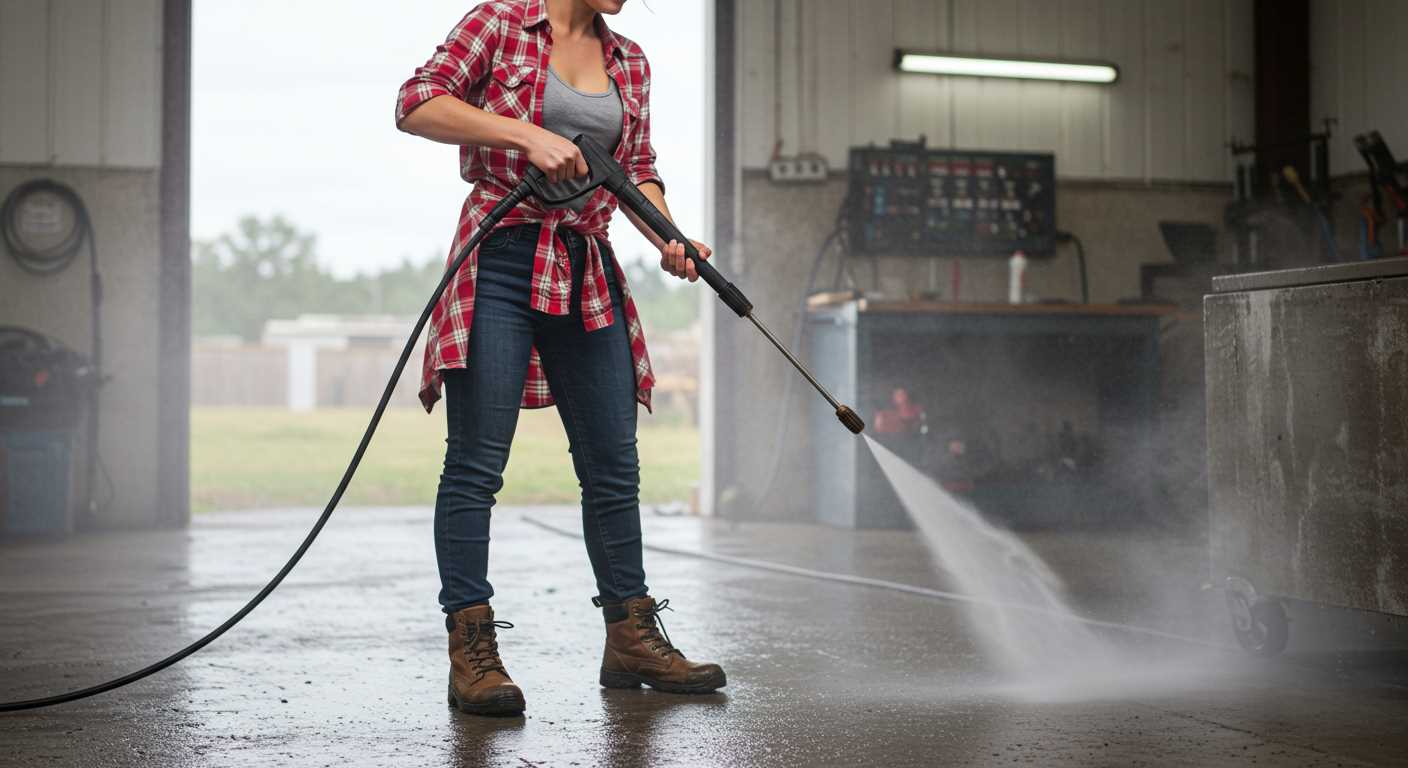
Perform periodic checks for cracks, chips, or discolouration in the surface. Promptly addressing any issues prevents further deterioration. Sweep the area regularly to remove debris, and consider using a mild detergent solution for routine maintenance. Protect against invasive weeds by applying a suitable herbicide where necessary.








